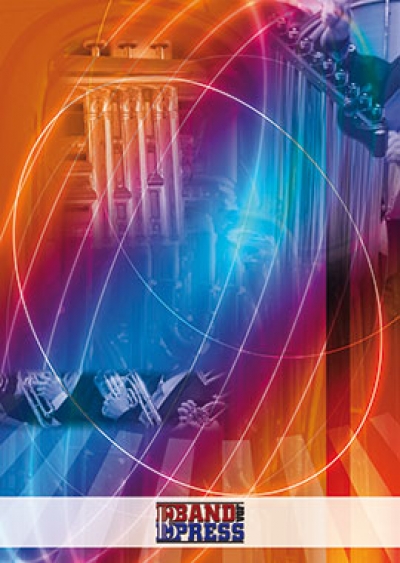Results
-
 £86.00
£86.00The Journal of Phileas Fogg - Graham Peter - Vertommen Luc
Estimated dispatch 7-14 working days
-
 £64.00
£64.00The Lord Bless You And Keep You - Lutkin Peter - Vertommen Luc
Estimated dispatch 7-14 working days
-
 £72.00
£72.00The Red Machine - Graham Peter - Vertommen Luc
Estimated dispatch 7-14 working days
-
 £72.00
£72.00The Spirit of Christmas - Graham Peter - Vertommen Luc
Estimated dispatch 7-14 working days
-
 £93.00
£93.00The Torchbearer - Graham Peter - Vertommen Luc
Estimated dispatch 7-14 working days
-
 £72.00
£72.00The Wonder of Christmas - Graham Peter - Vertommen Luc
Estimated dispatch 7-14 working days
-
 £57.00
£57.00Three Jazz Pieces - Graham Peter - Vertommen Luc
Estimated dispatch 7-14 working days
-
 £179.00
£179.00War of the worlds - Graham Peter - Vertommen Luc
Estimated dispatch 7-14 working days
-
 £26.43
£26.43The Three Kings (Euphonium Solo with Brass Band) Cornelius arr. Wainwright
This beautiful arrangement of the much loved tenor solo The Three Kings was made for the GUS Band and euphonium soloist Mark Giles, for the CD recording Christmas Fantasia - The Music of Andrew Wainwright (2013). The Three Kings, or Three Kings From Persian Lands Afar, is a Christmas carol by the German composer Peter Cornelius. He set Die Konige for a vocal soloist, accompanied by Philip Nicolai's hymn Wie schon leuchtet der Morgenstern ('How Brightly Shines the Morning Star'), which he erroneously thought was an Epiphany hymn. In fact, it is an Advent hymn in which the morning star is an allegory for the arrival of Jesus, not the Star of Bethlehem. In Cornelius' original second setting, the accompaniment was played on a piano but the English organist Ivor Atkins later arranged the accompaniment for choir, with the choir singing the words of the original hymn. The carol describes the visit of the Biblical Magi to the Infant Jesus during the Nativity and is also used as an Epiphany anthem. To view a rolling score video of Mark Giles performing the solo with GUS Band, please visit www.youtube.com/watch?v=YsLVNknim7w PDF download includes score and parts. Sheet music available from: UK - www.brassband.co.uk/sheet-music/the-three-kings-euphonium-solo-with-brass-band-cornelius-arr-wainwright-brookwright USA - www.solidbrassmusic.com Difficulty Level: 4th Section + Instrumentation: Euphonium Soloist Bb Soprano Cornet Eb 1st Cornet Bb 2nd Cornet & Flugel Bb 1st Horn Eb 2nd Horn Eb 1st Baritone Bb 2nd Baritone Bb 1st Trombone Bb 2nd Trombone Bb Bass Trombone 2nd Euphonium Bb Bass Eb Bass Bb
In Stock: Estimated dispatch 1-3 working days
-
 £59.99
£59.99Second Star to the Right, The - Christopher Bond
This famous tune from the iconic Peter Pan movie has been arranged many times, but never for brass band. This arrangement for solo trombone and band is ideal for putting one of the trombones in the spotlight, with a solo part and accompaniment suitable for bands of third section standard and higher.
Estimated dispatch 5-10 working days
